The NRA competitive shooting disciplines are quite numerous, but some of the most well known are the NRA High Power formats, specifically Across the Course (National Match), Mid-Range, and Long Range. NRA Mid-Range and Long Range matches are seeing an up-tick in participation due to the inclusion of F-Class. Before F-Class, Mid-Range and Long Range involved prone shooting with only a sling for support.
With the introduction of F-Class, which involves prone shooting with a front and rear rest, and the fact that F-Class is a supported category in NRA Mid-Range and Long Range matches, lots of shooters who have no competitive shooting background are starting to participate in NRA matches.
Shooters that are not familiar with NRA competitive formats are often left to wonder what gear they need to participate as an F-Class shooter. I can sum up the necessities quite quickly:
- Rifle
- Bipod or front rest
- Ammo
That’s it.
Really? Really.
Granted, there are a few administrative details (e.g. Empty Chamber Indicator), but any match worth its salt will have directors and/or participants who can help a new shooter out by providing (giving or loaning) any other supplementary equipment, such as loaning use of a spotting scope or shooting mat.
That being said, I wanted to write a little more about what gear (aside from a rifle, ammo, and rest) will help make a person more prepared for a match, especially if for some reason, no one is willing to share gear to help out a new shooter (shame on them).
Shooting Mat
Some shooters will cite masculinity and say a mat isn’t necessary. Well, technically it’s not. I have no problem laying in the dirt, either, but why should you if you don’t have to? Your average Mid-Range / Long Range prone match will consist of three strings of fire, between 22 and 30 minutes each. That’s over an hour laying on the ground, and depending on what range you’re shooting at and the time of year, that could mean quite a bit of discomfort (hot ground, rocky ground, fire ants, etc). At the very least bring a drop cloth to lay on. It’s not fancy, but that will give you a bare minimum amount of protection from the ground. There are a ton of various shooting mat options out there. I personally use an old Blackhawk roll-up shooting mat that I bought back in 2004. It is pretty beat up and the padding has flattened, so I probably should get a new one.
Spotting Scope and Stand
A spotting scope can be a second thought for an F-Class shooter because they already have a scope on their rifle in which they can see the target spotting and scoring discs. Spotting scopes are also useful for reading mirage to make wind calls. But then again, an F-Class shooter already has their rifle scope. But obviously, the rifle scope is not useful when you’re not the shooter. If you are the person scoring for the other shooter/relay on your target point, you need some sort of optic in order to see the target and discs.
Then of course, you need some sort of stand to put the spotting scope on.
At the very least, you can use a regular camera tripod with a basic spotting scope when you’re scoring for someone else. But if you want to use a spotting scope while you’re shooting, you’ll want to look into a scope stand designed for using a spotting scope in the prone position.
Backpack or Cart (or Sherpa)
Shooting carts are a standard piece of equipment at NRA High Power matches. When you have to move from the truck to the 200 yard line, 300 yard line, 600 yard line, then back to the truck, carrying a rifle, shooting coat, spotting scope and stand, ammunition, gloves, magazines, food, water, etc, it can be a chore to haul all that gear.
Depending on how small your kit is, you can most likely get away with a backpack to carry your gear and just keep your rifle in a soft case. Either way, you should be prepared to be able to carry your gear from your vehicle to the firing line.
Rear bag
A rear bag to support the stock is going to make your shooting more consistent (accurate) as opposed to just supporting the rear of the stock with your bare hand. Depending on the kind of shooting you do outside of F-Class, odds are you have some sort of rear rifle support whether it is a basic sandbag, a ‘tactical’ rear bag, or perhaps a benchrest-style rear bag.
For the first time shooter, I recommend any rear bag that can be ‘squeezed’ with the support hand to adjust the height of the rear stock. Note that tactical / PRS match (Precision Rifle Series) shooters will use squeeze-style bags in F-Class because they want to practice with what they use in other formats.
The squeezable bags are not totally ideal for F-Class, but this will at the very least provide you with the most ‘universal’ rear rest for any given terrain. Then post-match, you can figure out out what rear rest you will need for future F-Class matches for your specific rig / rifle platform. If you already have a benchrest-style rear bag, then definitely bring that with you.
Notebook
Some shooters like to have specialized data books to record information. If you become a regular match shooter, these data books can be very handy to look back on for reference, almost like a shooter’s diary. For a shooter going to his/her first F-Class match, I would recommend just bringing a small pocket notebook to record data and notes. Keep things simple and record the essentials, such as elevation and windage settings, and scores for the stages (either while you shoot or copy off your score card), but also feel free to take notes on new ideas/concepts/information you pick up while participating in the match.
Food and water
NRA High Power matches can actually be multi-hour affairs, so be prepared for a solid day at the range. Nutritional snacks and water will help keep you going throughout the match. I personally go with energy or protein bars with a Camelbak water bottle backed up with a couple of regular bottled waters. Everyone is unique as far as their sustenance needs, so plan accordingly.
Confirmed Elevation Zero
This is not a piece of gear, but I feel that going to a match with a confirmed elevation zero for *any* distance is going to be valuable for a good first match. Most shooters will have a 100 yard zero. Some will have a 50 yard zero while some might have a 200 yard zero. No matter what, going to the match with a confirmed zero of some sort will make it easier to get on paper at distance. Combine this with a ballistic chart generated by any of the freely available ballistic calculators out there (e.g. JBM Ballistics or the Vortex LRBC application), and you should be able to get on the known distance targets in a couple well aimed shots.
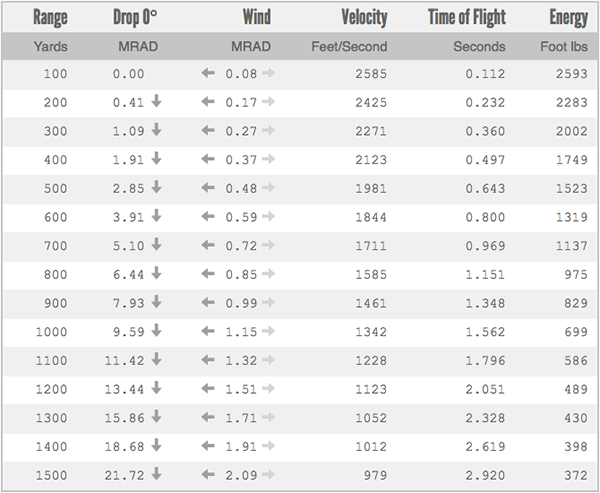
If you have a known elevation zero, say 100 yards, your scorer (or any other experienced shooter on the firing line) will be able to help you get on target.
The above should help anyone thinking about trying out an F-Class match for the first time. NRA Mid-Range and Long Range matches are actually ‘easy’ matches to participate in. There technically isn’t much required gear and it is not a physically taxing course of fire (just lay down and shoot).
But if you don’t have any extra gear except your rifle, ammo, and front rest, don’t let that deter you from attending an F-Class match. As I said before, the match director and/or other participants will be able to help you out if you are lacking some equipment, whether it be a shooting mat or spotting scope. Get out there and shoot.

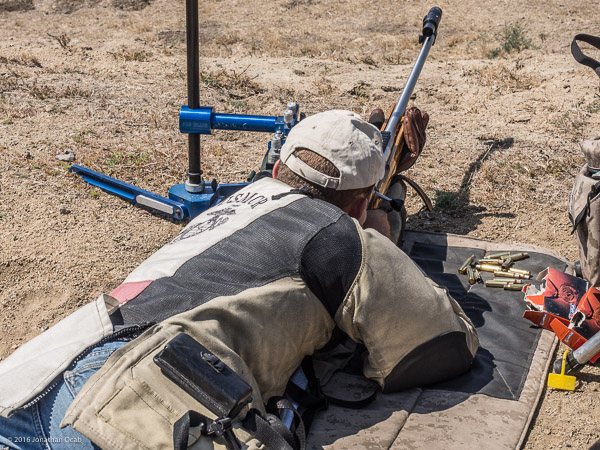
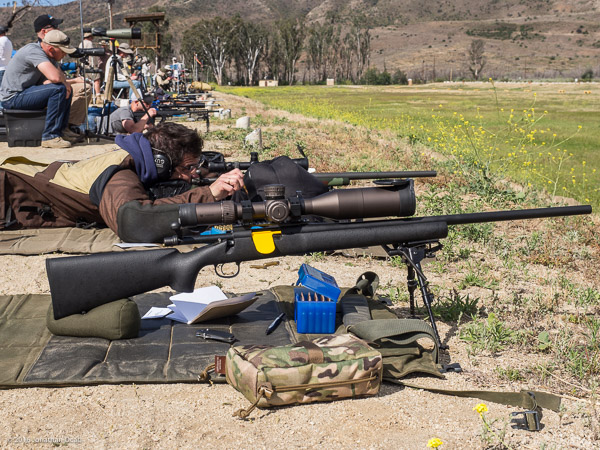
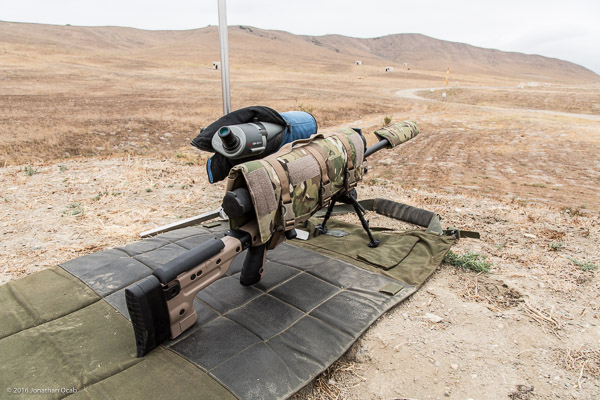
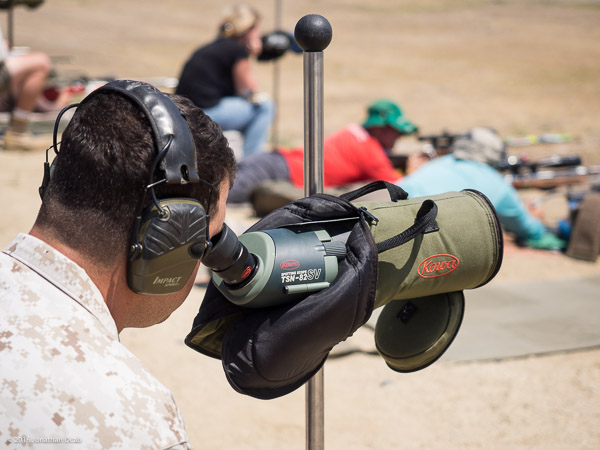
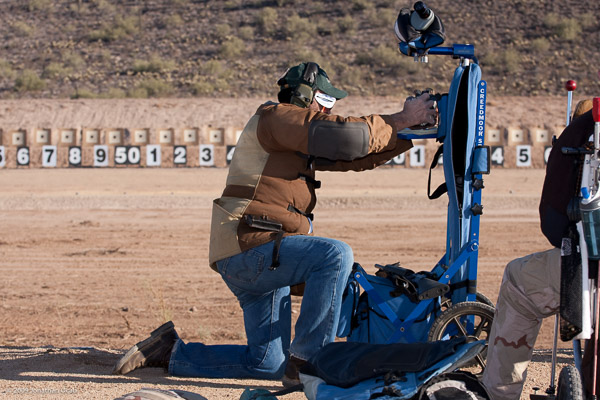
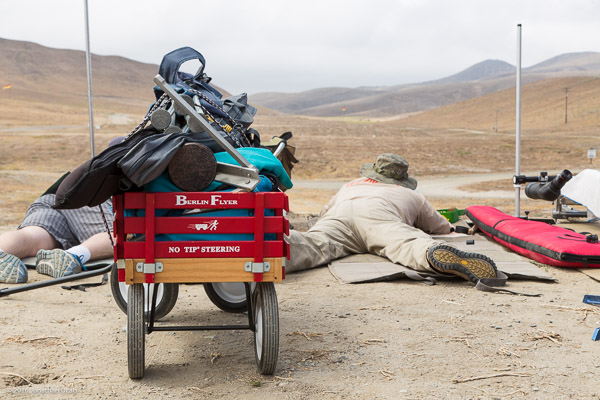
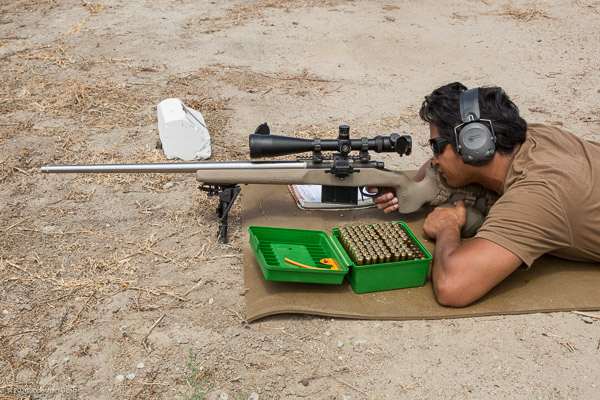
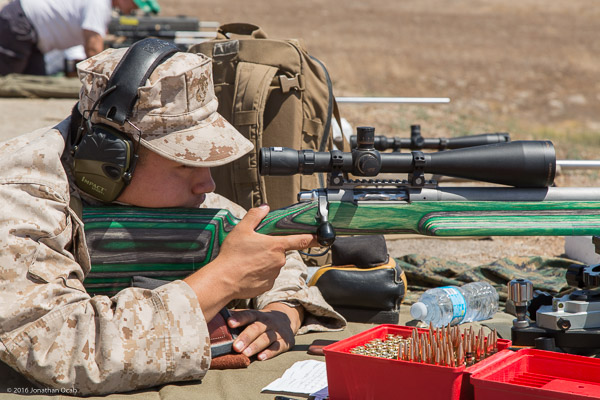
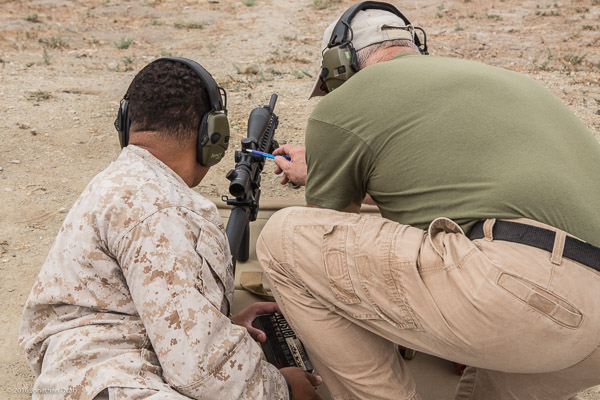
Comment on this post